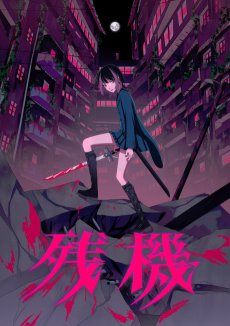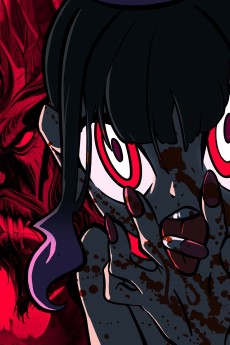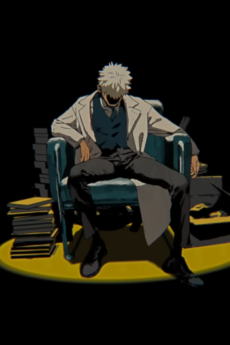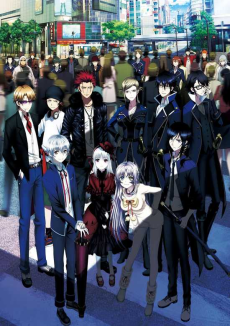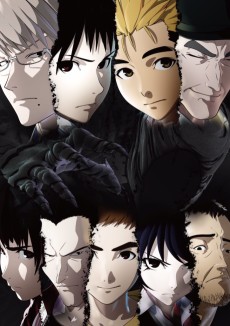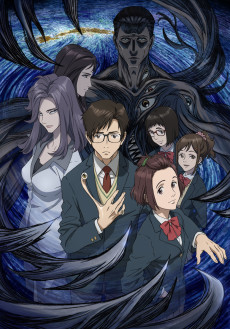CHAINSAW MAN
STATUS
COMPLETE
EPISODES
12
RELEASE
December 28, 2022
LENGTH
25 min
DESCRIPTION
Denji is a teenage boy living with a Chainsaw Devil named Pochita. Due to the debt his father left behind, he has been living a rock-bottom life while repaying his debt by harvesting devil corpses with Pochita.
One day, Denji is betrayed and killed. As his consciousness fades, he makes a contract with Pochita and gets revived as "Chainsaw Man" — a man with a devil's heart.
(Source: Crunchyroll)
CAST
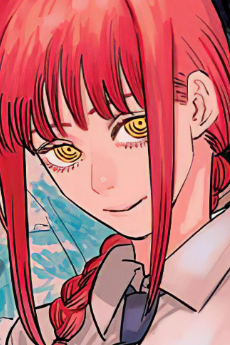
Makima
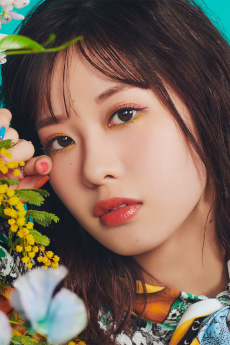
Tomori Kusunoki
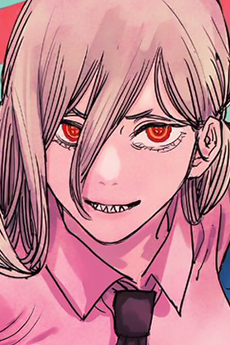
Power

Fairouz Ai
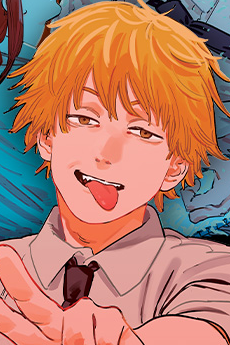
Denji
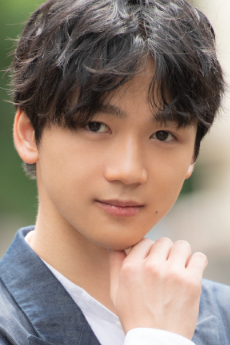
Kikunosuke Toya
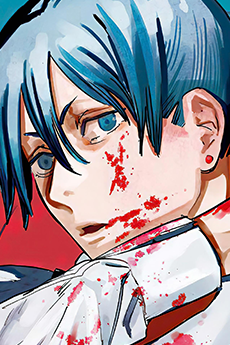
Aki Hayakawa
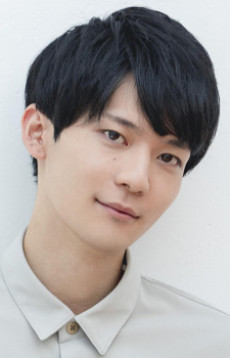
Shougo Sakata
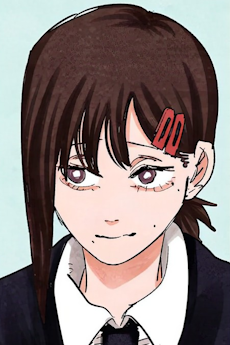
Kobeni Higashiyama
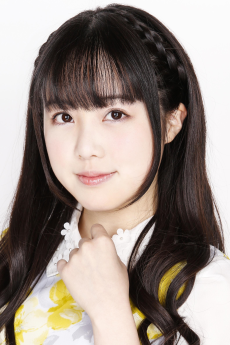
Karin Takahashi
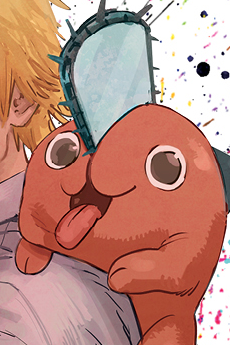
Pochita

Shiori Izawa
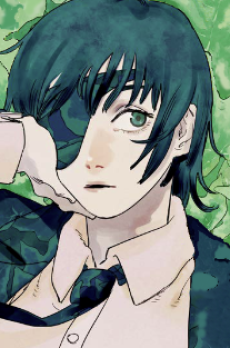
Himeno

Mariya Ise
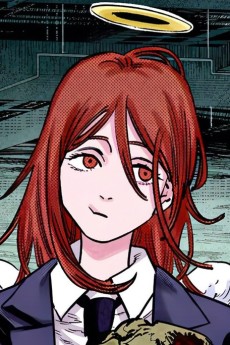
Tenshi no Akuma
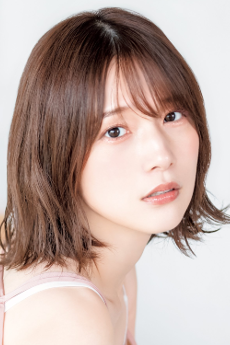
Maaya Uchida

Kishibe
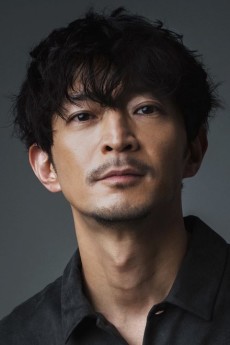
Kenjirou Tsuda
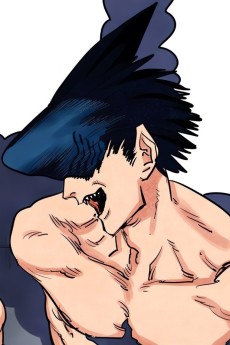
Beam
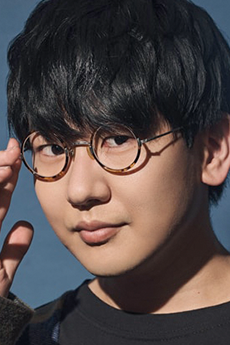
Natsuki Hanae
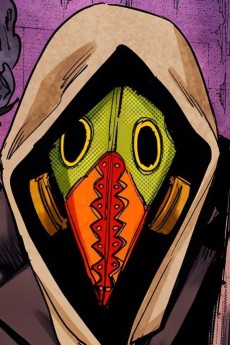
Bouryoku no Majin
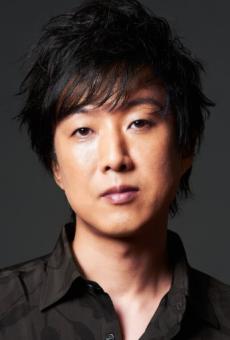
Yuuya Uchida
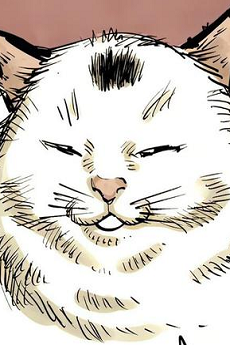
Nyaako
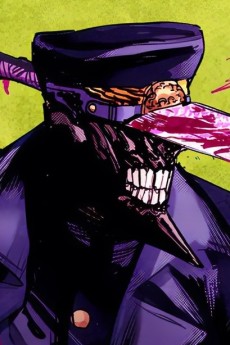
Samurai Sword
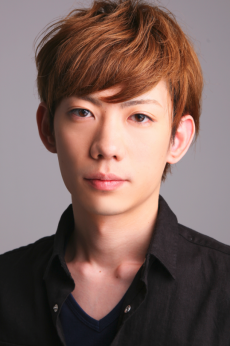
Daiki Hamano
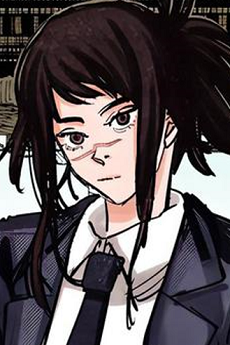
Michiko Tendou

Hitomi Ueda
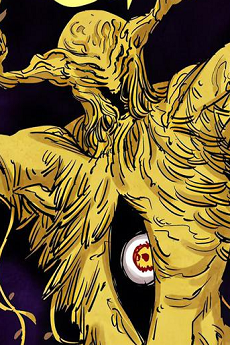
Mirai no Akuma
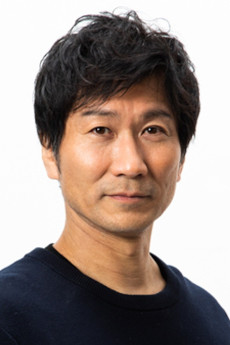
Hiroki
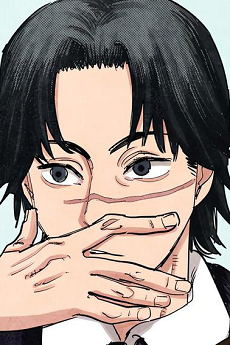
Yuutarou Kurose
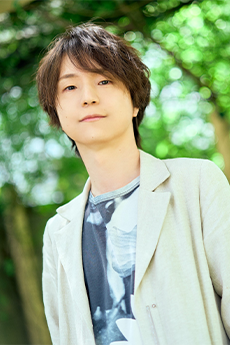
Kengo Kawanishi
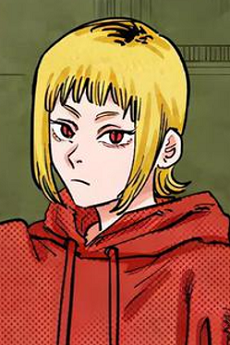
Akane Sawatari
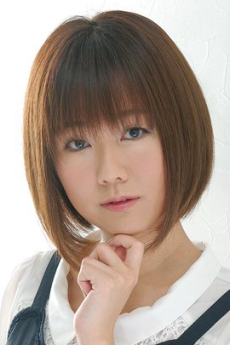
You Taichi
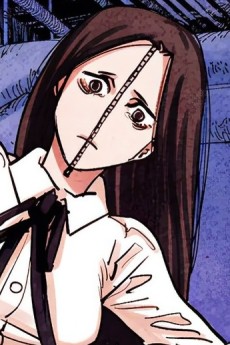
Prinz
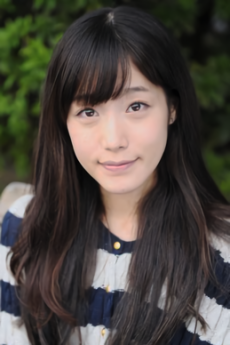
Saori Gotou
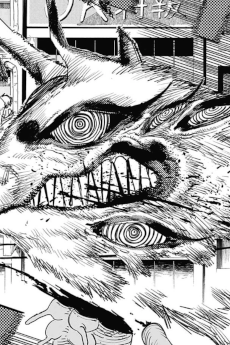
Kitsune no Akuma
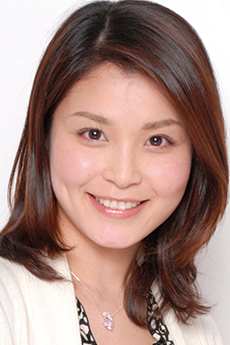
Yuuko Kaida

Yuurei no Akuma
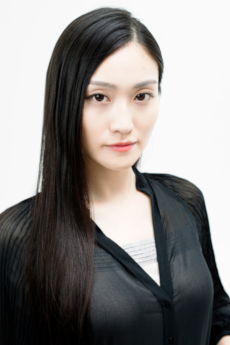
Hiroko Kiso

Hirokazu Arai
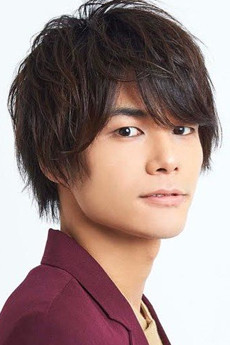
Taku Yashiro
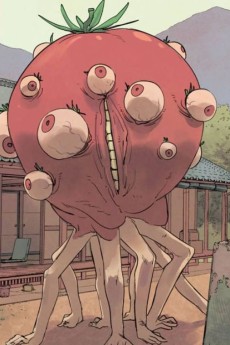
Tomato no Akuma

Hinata Tadokoro
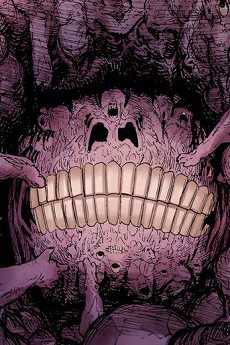
Eien no Akuma
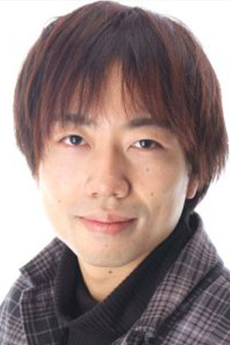
Hironori Kondou

Koumori no Akuma
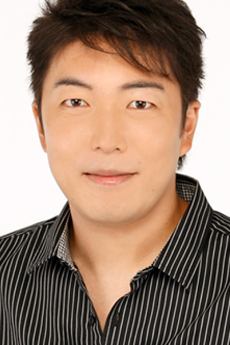
Kenichirou Matsuda
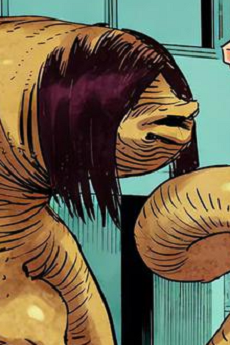
Hiru no Akuma

Uko Tachibana
EPISODES
Dubbed
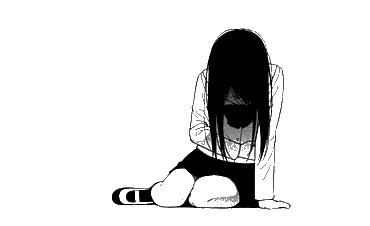
Not available on crunchyroll
RELATED TO CHAINSAW MAN
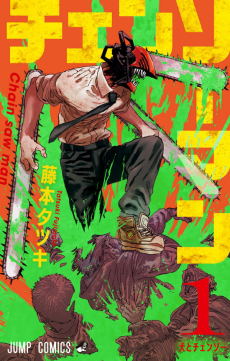 MANGA ActionChainsaw Man
MANGA ActionChainsaw Man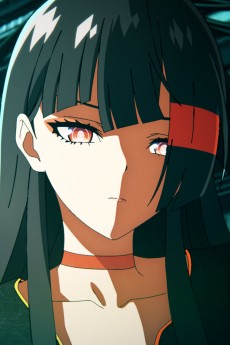 MUSIC SupernaturalDainouteki na Rendezvous
MUSIC SupernaturalDainouteki na Rendezvous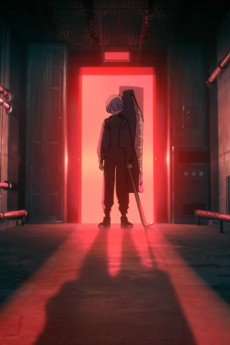 MUSIC ActionFight Song
MUSIC ActionFight Song MOVIE ActionChainsaw Man: Reze-hen
MOVIE ActionChainsaw Man: Reze-henREVIEWS

Jebmond
55/100Chainsaw Man is incredibly mediocre and over-hypedContinue on AniListIt is undeniable that Chainsaw Man has gained a significant amount of popularity in recent years, with many hailing it as a masterpiece of the shounen genre. However, upon closer examination, it becomes clear that this praise is largely undeserved, and that Chainsaw Man is, in fact, an incredibly mediocre and over-hyped series.
One of the primary reasons for this hype is the high production value of the series, which is often cited as a standout aspect of the show. While it is true that the animation and visuals of Chainsaw Man are impressive, with high-quality action sequences and background design, these elements do not completely make up for the numerous awkward-looking scenes and the heavy reliance on CGI. It seems that much of the show's notoriously high budget was poured into the explosive and visually impressive endings as well as hiring twelve different popular artists to make them, rather than the overall quality of the show itself.
Furthermore, the story and characters of Chainsaw Man are completely bland and generic, lacking any depth or originality. Most characters fall into very common tropes that have been beaten to death, like Aki, who is the shounen genre’s twentieth Sasuke copy. The plot follows the typical shounen formula of a goofy, a semi-charismatic protagonist fighting against increasingly powerful enemies (with poor and incomprehensible power scaling). But the twist for csm is that this mc’s most stand-out feature is being horny instead of being hungry. With shallow and surface-level character development, the characters themselves are one-dimensional and fail to leave a lasting impression, with most of the side characters simply serving as vehicles for the plot and "huge twists" when side character A & B die an inconsequential death to show how strong the antagonist is.
To further expand on the lackluster character writing, let's break down a few specific characters. First, Makima, the most beloved character in csm. She is commonly touted as a remarkable and incredibly well-written villain, but in reality, the biggest twist she brings to the table is her gender. If an antagonist was exactly like her, and manipulated Denji in a way that wasn't sexual, then the character would just be incredibly average, and nobody would care about them. Makima isn’t the only character carried on the back of horny anime fans, but Kobeni is too. To be frank, she’s just incredibly unlikable. She only cries and screams and proceeds to make the wrong decision at almost every opportunity. She did only one thing right in this entire season, but she was crying while doing it, and did a half-assed job of it too. For the rest of the main cast, Power and Denji are fine, they serve a decent job as comic relief type characters, but they still aren’t that stand-out in that regard either. I will not elaborate further on Aki being a Sasuke clone, that is the plain and simple truth.
With all the criticism out of the way, none of that is to say that Chainsaw Man is a horrible show, it is just remarkably average. The high-production value and the one-note characters are enough to derive enjoyment from when watching this anime, at least to the point of not being bored, but this series is nowhere near the masterpiece it is claimed to be. It’s as bland as demon slayer but has a little more gore and more mature aspects but they aren’t handled maturely they’re just used in gross excess that detracts all meaning. But the series possessing those aspects is enough for fans to convince themselves that csm is a profound, deep, and mature work.
In conclusion, while Chainsaw Man may have impressive production values and action sequences, it is ultimately a mediocre and over-hyped series that fails to deliver in terms of storytelling and character development. Its relatively good fight-scenes and twelve unique endings cannot make up for its shallow and generic narrative, making it just an average to slightly enjoyable watch.

Magenta
85/100A great adaptation of a chaotically amazing story, even if some things inevitably get lost in transition.Continue on AniListPreface: This review is primarily a comparison of the anime adaptation of Chainsaw Man and its source material. If you clicked on this review just for an actual review of the first season of Chainsaw Man’s story, only read the introductory paragraph inside of the quote bubble.
This review and comparison contains minor spoilers for Chainsaw Man. Chainsaw Man’s draw lies in chaos. It may be mentioned in the same breath as other modern shounen, but it is the odd one out. At times, it can feel like it goes out of its way to break norms and conventions. Its main characters are more governed by primal instincts than those of typical heroes. Characters that are more anchored to reality either die or start to become more detached as the world and characters around them. For nearly half of the entire season, its main character’s primary motivation is to fondle a girl’s boobs. This type of chaotic attitude can get out of hand quickly, leading to an incoherent story. However, Chainsaw Man pulls a very important trick. While it poses under the illusion of chaos, under closer inspection, it's supposed chaos starts to become far more orderly. Chainsaw Man examines what constitutes a normal life as a human being. What does it mean to have a normal life? What does it mean to be human? In its more deranged characters, like Denji and Power, these themes manifest themselves by developing them in ways where they are learning how to feel basic emotions of life, like empathy and motivation. By contrast, the one main character that already has actual motivation and drive, like Aki, learns to detach themselves from it in ways that lets them enjoy the pleasures of life. This is the consistent thematic throughline in this story, even if it is intentionally invisible. It is the glue that keeps Chainsaw Man coherent in its chaos. And it is also what makes it click. What makes Chainsaw Man work is in how it imbues its characters, world, and story with seemingly idiosyncratic elements. Even if these elements don’t seem like they fit together at all, when taken in its whole, it forms a beautiful picture. Although its themes surrounding the nature of humanity aren’t fully matured yet, the seeds are planted for a beautiful blossom.
8.5/10 However, to leave a review at just that is to be a tad disingenuous. My short write up can easily apply to both the anime and manga versions of this story, since it only touches on story and plot details. This is a by-product of the anime being extremely faithful to its source material storywise. There is very little deviation from the original storyline, not even breaking from the manga’s weaker plot elements. It is a very faithful adaptation in that sense. Plot is always half of the picture though. In the transition of mediums, presentation needs to be taken as much, if not more into account. Here is where the problem with a Chainsaw Man adaptation lies. Chainsaw Man’s manga is a convention-breaker in the plot-sense, and it also is that way in its presentation.
Compared to most contemporary popular manga, Chainsaw Man is crude. It lacks much consistency when it comes to art quality, with faces commonly being underdrawn and environments being under detailed or blank. But what it lacks in the detail it gains unique in framing and paneling. In comparison to its competitors, Chainsaw Man’s manga possesses a paneling style that is reminiscent of live action cinematography. There is a real feeling of kinetic motion that can be a bit hard to describe in words.
Here is an example, take the end of the Leech Devil fight when Aki summons the Fox Devil.

It is hard to express manga panels through AniList images without clogging up the review, so it is best to experience this moment through the turn of a page and not through a horizontal image of all four pages laid out. This moment is Chapter 10, Pages 12-15.
In three of the four pages where the summoning takes place, the point of view remains stationary. This stationary point of view familiarizes ourselves with the space that is established, from Aki’s point of view. When Aki’s hand moves upwards, it goes from the bottom panel of the first page into encompassing the full second page. Although it cuts back to Aki briefly, the fourth panel features the Fox Devil encompassing the full page, eating the Leech Devil. The framing of objects in the moment leads to a feeling as if we are looking at Aki’s point of view, staring down at the Leech Devil. What makes this moment most impressive is that motion is established through the simple turn of a page. Our brains can fill in what happened within the page turn, leading to an illusion of movement. It is like how animation fools our minds with smooth movement despite being a series of moving images, but it is through a medium made up of solely stationary pictures.
Here is that same moment in the anime:
The end of the Leech Devil fight in the anime has the animation, it has the higher visual fidelity, it has the sound effects, but it isn’t nearly as special as its manga counterpart. This isn’t due to any changes in the framing of the moment, because it is nearly the same. By complete necessity, the motion of Aki’s hand movement has to be explicitly stated by the animation. However, a sense of motion in a medium where things don’t typically move is different from a sense of motion in a medium where everything moves. It is just that this moment specifically works because it is in a manga format. Although its techniques are replicants of those found in audiovisual mediums, the end product ends up having an impact that only something in a manga might have. Any attempt to transition it into animation would water it down due to the juxtaposition of techniques and mediums being completely gone. In transitioning into an audiovisual medium like animation, much of the appeal of a moving camera being emulated on paper is lost when it no longer becomes emulated. Much of the more clever moments of paneling get dampened in their anime-equivalents just due to them not being in a manga format anymore. Moments where techniques that were adapted into the manga medium were used can’t have nearly the same impact just due to those techniques being used prevalently elsewhere. Other moments where this type of paneling technique that is lost in adaptation happens in moments like when Power kills the Sea Cucumber Devil, the beginning of the Katana Man fight, etc.
Much of a Chainsaw Man adaptation would be difficult just due to Tatsuki Fujimoto’s idiosyncratic style of art and manga. He is an unconventional mangaka, but he is one that would squeeze the most out of the medium he is working within. Chainsaw Man is great because he can consistently push the medium to its near limit. However, an anime adaptation of Chainsaw Man can’t do that without a direction that is comparable to the manga’s creation of cinematography in a flat space. That is a hard task, and any attempt to create a new direction without a strong idea or foundation could lead it to easily backfire. So the anime adaptation plays things very safe in terms of visual direction for the most part. Although a scene like the Fox Devil summoning is far better in manga format, the anime adaptation of it was probably the safest way to adapt it. The risk of unwatchability of a scene is persistent when not every element of it is in tune.
At the end of the day, adaptation relies on interpretation. How one would understand Chainsaw Man is key to knowing what they would think about the manga or anime. Is it prestige shounen or is it something else entirely? If you have been reading this review, you may see that I have a very strong preference towards the “something else” angle, but all pieces of media are subject to one’s own interpretation, and to act like there is a correct answer to this question is to be a ridiculous person. Media is made for its medium, and to adapt it into something else will naturally involve infusing one’s interpretation of the work within it. MAPPA’s anime adaptation of Chainsaw Man leans a lot more towards the “prestige shounen” angle, which is a very valid interpretation of what Chainsaw Man as a story is. Even if the visual direction isn’t in the direction that I would like, it is still visually stunning. I know that I have been poo-pooing this entire adaptation for this entire review, but just know that it is because of very subjective factors that are inevitable. Just know one thing,
This Adaptation Is Very Very Good
Just because Chainsaw Man stands out among prestigious shounen, doesn't mean its anime adaptation loses out on the full love and care that other prestige shounen have in their adaptation. As a matter of fact, saying something is “prestige shounen” is usually far from derogatory when discussing presentation. Like others like it, the visuals and animation is top-class. Obviously, the fight scenes are a feast for the eyes. Sure, the CGI is a bit noticeable at times, but it doesn’t look so bad that I would start an online petition over it. That is the thing that jumps out the most with the visuals, as is with any of the anime’s contemporaries. However, the anime has an absurd amount of detail in its environments. The manga’s underdeveloped backgrounds are now contrasted with the anime’s overdetailed backgrounds.

look at this hallway, it looks so good, i think i am legitimately obsessed with it Combined with extraordinary sound design, the Chainsaw Man anime becomes one of the most immersive anime in recent memory. This culminates in the sequence of Aki’s morning routine, a nearly two minute long anime-original sequence at the end of Episode 4. His morning routine is absurdly overdetailed and absurdly well animated.
_uh, my computer’s storage is full so i can’t download the video of aki’s routine and put it in my review_ _go watch it on your VERY LEGAL anime streaming service of choice, and if you have already watched it, go watch it again, it is the thing the anime medium has been leading up to for a 100 years_
However, if there is one singular blemish on this adaptation, it would have to be the rather dull color palette. Chainsaw Man is a chaotic story, and judging from many of the volume covers, and even the EDs, it should have a very colorful color palette. A chaotic story and a chaotic cast of characters should breed chaotic colors. However, the color palette of the anime remains extremely dull. Compare this moment from the anime and the manga.


The manga lacks any color, but it makes up for it in contrast. That contrast between the light outside and the darkness in the cart car is what sells the moment in the manga. In the anime, there is a little bit of contrast, but it is dampened by everything looking extremely gray. Considering the existence of nearly every piece of Chainsaw Man media and the colorful color palettes of most other prestige shounens, this is a very weird flaw for this show specifically to have.
Well that was a bit of a negative note to leave on. I can’t think of a better way to transition into the conclusion though, so yeah.
Chainsaw Man’s anime provides a good lesson in adaptation. The change in medium will always lead to a different story being told. Even if all plot beats are completely retained, there will always be a wrench that forces a change to happen. The more entrenched that piece of media is within its source medium, the harder it becomes. Going from manga to anime is comparatively way easier than say, from anime to live action, but it still provides its own challenges. Losing aspects in adaptation is inevitable. To try to adapt everything completely faithfully is to play a fool’s game. If you fail, people will just go and see the source material since it does everything you tried to do but better. The key in adapting faithfully is to build off its own strengths completely unique to it while still retaining the original’s feeling and story.
Is the Chainsaw Man anime better than its manga? I don’t really think so. The manga provides a far more unique experience that would be hard to find elsewhere. The anime is forced to whittle down many of its more unique elements, and just for that, I think that it is worse. However, there is a very strong argument to be made that it is better. The truncated uniqueness of the story is made up for by having some of the best animation there is to offer in the industry as well as being one of the most immersive. Chainsaw Man’s anime and manga are both very good pieces of media that I would highly recommend. It is just that they are very good in two different directions.
Thank you for reading to the end of the review if you did. If you have any criticisms of how this review was made, you are free to message me or reply under this activity to critique what I had to say.
Also, please don’t like or dislike the review without reading it.

Granzchesta
79/100I Like Chainsaw Man, I Hate MAPPAContinue on AniListI hate post-Maruyama MAPPA. I can't help but hate this studio that treats its animation and production staff as if they are lower than human. Masao Maruyama founded this studio with a passion. He put his everything and created a studio where directors could bring their visions to life. And what was the purpose of all of that? Did he do all this only to see his beloved studio turn into a factory-like environment that doesn't give a damn about its staff? Also, what will happen by keeping this business vision? Will they produce as much anime as possible before most of their talented staff escapes to other big studios and turn this studio into the disaster MADHOUSE is nowadays? Is watching his beloved studios turning into garbage Maruyama's curse, or does MAPPA's higher-ups only care about stuffing their pockets as much as possible before the inevitable end? You might say, "Why are you talking about this in a Chainsaw Man review? Even though MAPPA's higher-ups are evil, Chainsaw Man's production has no problems!" but this will be just sweeping the problem under the rug. Although Chainsaw Man's production is still better than most other TV anime, its shortcomings are as plain as day. But let's talk about the story and characters first because I don't want to sound like an obnoxious swine that complains about everything, as if I already didn't for some people.
The story follows Denji, who made a contract with Chainsaw Devil Pochita. Their days are going with poverty because he is trying to pay the debt his father left behind. He constantly dreams of an ordinary teenage life—where he will have a warm bed, three meals a day, and a girlfriend. The golden opportunity finally knocks on his door when he dies and returns from the death by Pochita sacrificing himself, replacing Denji's heart. After this point, Denji is no more human. He is a special case who can turn into a devil, the Chainsaw Man. He joins the Public Safety's one of the devil hunter divisions with the help of a woman named Makima from the Public Safety. Here, he finally obtains a warm bed and three meals a day, and the only goal left for him is to get a girlfriend, he decides to be lovers with Makima after she was the first person who treated him like a human.
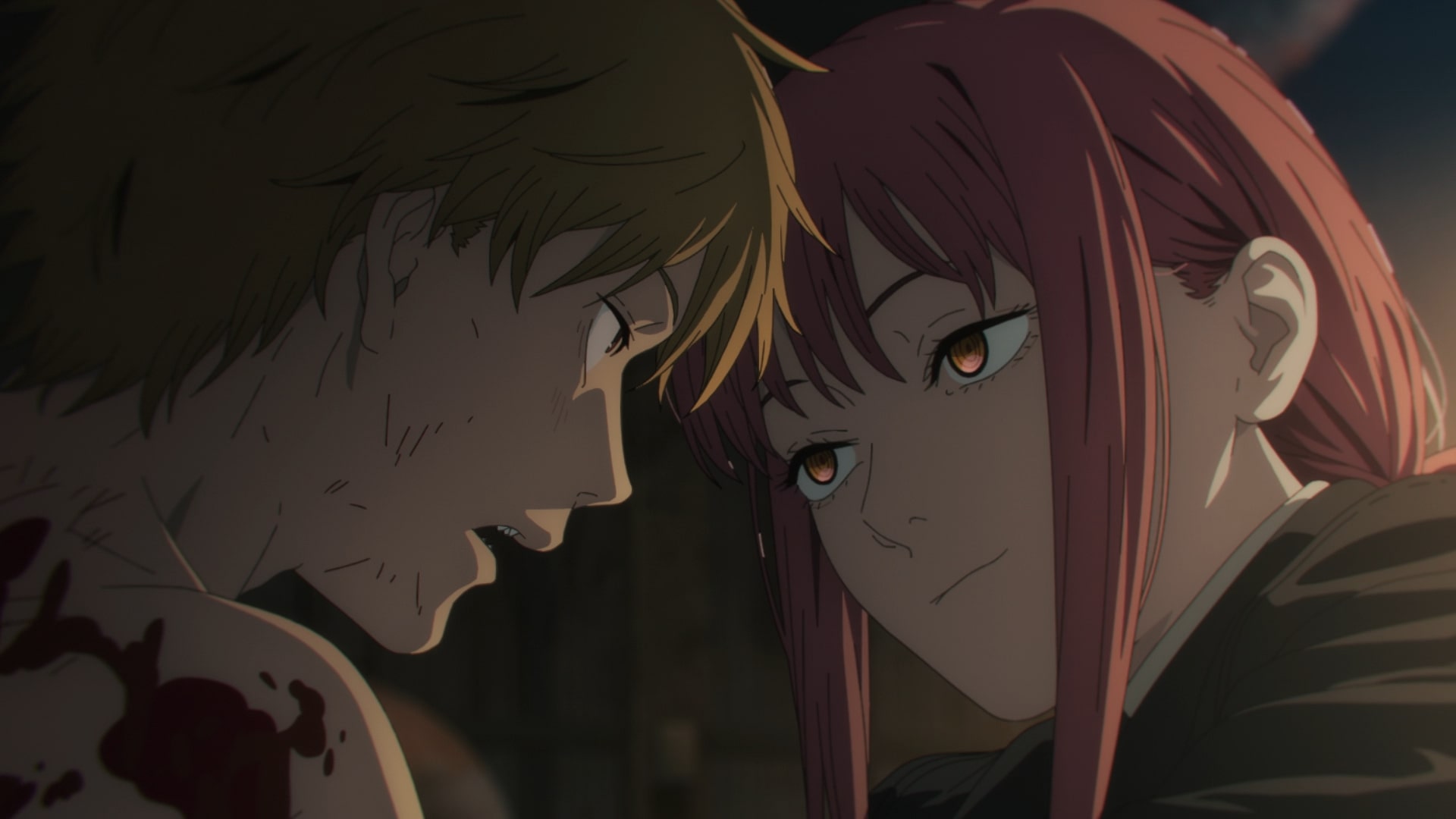
Chainsaw Man (2022) is the first 12 episodes of a series that will probably consist of 24-25 TV episodes and one cinema film in its first "saga". So, if you still haven't watched the show, mind this while setting your expectations. The first seven episodes of this season pass with character introductions and plot setting, and the real deal starts with the eighth episode. Spending more than half of the season with set-ups might sound boring for some people, but I assure you it is one of the best set-ups in this genre. It gives every needed information to the audience without spoon-feeding them. It presents its world and characters to us without relying on over-exposition. The scene where Aki warns Denji about the dangers of empathizing with devils and fiends is a prime example of this. We, as the audience, don't have a clear idea about how Chainsaw Man's world works. We know there are devils and devil hunters, but we don't know if the public has information about them. Then, instead of a character looking at the camera and explaining everything as if the audience are morons, we get a tense scene where Aki reminds Denji almost every people in this world has someone close to them killed by devils or fiends, and some of them are working for getting revenge or not letting the same thing happen to the others. Even if Chainsaw Man falls into laziness sometimes, it hugs the principle of "show, don't tell" more than all the other works in the same genre.
We see a similar fashion in the characters too. Characters in Chainsaw Man are introduced in situations where they can shine by showing their personalities. We first briefly learn how they act in certain circumstances and their personality traits, and only then dive into their inner worlds or backstories. It might seem like a feature that is easy to achieve since it's a simple aspect of writing, but you can't believe how many works try to throw tear-jerker backstories at their audience before introducing the characters properly; therefore fail at this. Chainsaw Man constantly achieves this with its supporting characters like; Power, Aki, and Himeno. Denji's case is a bit strange because we start the show by watching a sequence that can be called his backstory, but it still is a fair way to introduce Denji's character without being too much of a tear-jerker. However, we don't get character developments this season since the main focus here is serving as an introduction to a story that will be almost three times longer than the first season. There is story progression in the second half—which makes things very interesting and puts one of the characters in a very mysterious place—but that's all. Don't expect a storyline with an ultimate conclusion in this season. But you can expect highly unstable production values.
I don't know how much truth there is in it, but I believe MAPPA planned the anime adaptation of Public Safety Saga as a 2-cour TV series and a cinema film in the first place, but for some reason, the higher-ups insisted they needed to release the TV anime in 2022, even if it's during the Fall season. Once they realized there was no way they could finish a 2-cour TV series in the given time, so they divided it into two parts. I will repeat myself, I don't know how much truth there is in it, but I can't come up with another explanation for this unstable mess. On the one hand, we have scenes with beautiful backgrounds, stunning directing, creative camera work, staggering voice actings, fire soundtracks, and fluid character animations. On the other hand, we have scenes with backgrounds filled with 3D objects and crowds that look like student projects made on the weekend with a hurry, bland directing that conveys no emotions, tedious camera work, bland voice actings, unimpressive soundtracks, and janky animations. One side of this project flourishes with passion and creativity, and the other side crumbles on MAPPA's stubbornness. It's despairing to see because if MAPPA higher-ups didn't hold back the talented staff of Chainsaw Man, we could witness a production that comes twice or thrice in a decade. We still would be stuck with these dull colors, but at least everything around them would be stably good.

Also, I wonder what would Ryuu Nakayama's directing look like under ideal conditions. Because he said this in an interview:
"When I was in junior high school, "The Melancholy of Haruhi Suzumiya" was broadcast late at night, and anime boomed. However, there is a certain "type" of TV anime. The so-called Akiba-kei, moe, and other fixed concepts in subcultures, such as girls having green or pink hair, are examples of this. However, animation is not an expressive technique that can only be achieved by relying on such things. I always wanted to make something that could be seen by adults, something that would be powerful enough to withstand the viewpoint of appreciation of the work. When it came time to make an animated version of "Chainsaw Man," I looked for links to what I wanted to do, and since I love movies and Mr. Fujimoto also loves movies, I thought it would be interesting to incorporate the essence of the realistic and cinematic. Rather than personal selfishness, I'm convinced that this would benefit the work."
Even though I disagree with his "something that could be seen by adults" statement since, in recent years, we got shows that have some of the aspects Ryuu Nakayama points out and still can be seen by adults too, I still admire his passion for trying to find different ways to approach animation. So, seeing he couldn't convey his vision perfectly in this project made me sorrowful. Like the other aspects of the show I talked about, the directing is also unstable. There are scenes with a cinematic approach Ryuu Nakayama talked about, and they are a treat to get in a TV anime, but there are also scenes that are held back by this approach and end up being tedious. Also, I'm not sure what he meant by "cinematic" essence because the number of scenes that use techniques you would see in other anime is more than the number of scenes that feel cinematic. The former still has the usual directing we see in other anime with high-production values, but it doesn't have the aspects that can only be achieved through animation, which makes it automatically bland compared to the shows in the same genre and demographic, like Jujutsu Kaisen and Mob Psycho 100. As a result, all episodes except the eighth—which had Shouta Goshozono as the episode director—feel messy in the directing.
Chainsaw Man has a very talented staff that needs to be applauded since they still were able to bring an excellent show to us even though they faced MAPPA's shenanigans. It's an incredible set-up season despite being shaky in some areas. I wonder how long MAPPA can go like this before almost all of their irreplaceable staff members leave the studio, similar to what happened in MADHOUSE and Shaft. Because spending tons of money on twelve different endings while underpaying their staff members is an iniquitous thing to do.
I loved Chainsaw Man's first season and recommend it to everyone who likes to watch action shows, but I despise MAPPA's work ethic even stronger than before.
SIMILAR ANIMES YOU MAY LIKE
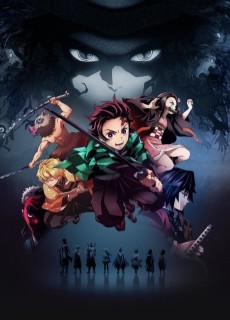 ANIME ActionKimetsu no Yaiba
ANIME ActionKimetsu no Yaiba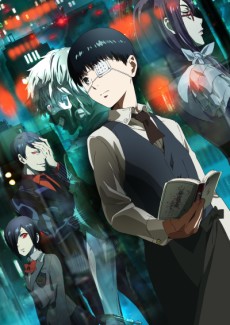 ANIME ActionTokyo Ghoul
ANIME ActionTokyo Ghoul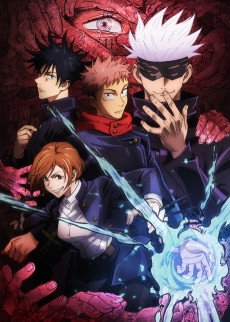 ANIME ActionJujutsu Kaisen
ANIME ActionJujutsu Kaisen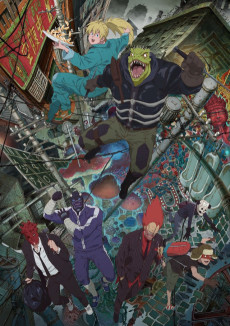 ANIME ActionDorohedoro
ANIME ActionDorohedoro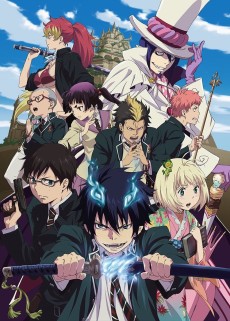 ANIME ActionAo no Exorcist
ANIME ActionAo no Exorcist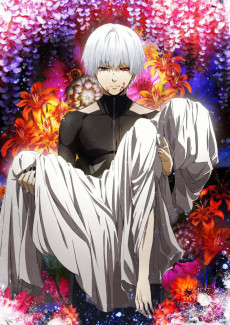 ANIME ActionTokyo Ghoul √A
ANIME ActionTokyo Ghoul √A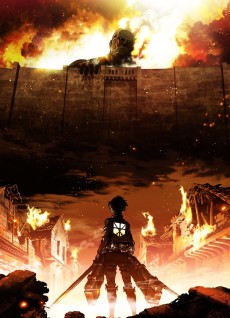 ANIME ActionShingeki no Kyojin
ANIME ActionShingeki no Kyojin ONA ActionDEVILMAN crybaby
ONA ActionDEVILMAN crybaby
SCORE
- (4.2/5)
TRAILER
MORE INFO
Ended inDecember 28, 2022
Main Studio MAPPA
Trending Level 9
Favorited by 25,274 Users
Hashtag #チェンソーマン #CHAINSAWMAN

